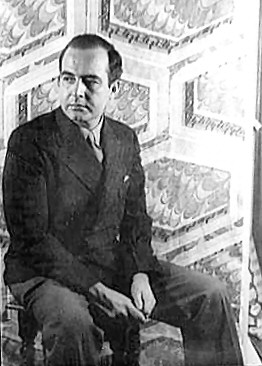Simanaitis Says
On cars, old, new and future; science & technology; vintage airplanes, computer flight simulation of them; Sherlockiana; our English language; travel; and other stuff
KNOXVILLE: SUMMER OF 1915 PART 1
THERE’S A GENTLE affirmation of life in Samuel Barber’s Knoxville: Summer of 1915, a piece for voice and orchestra that this composer called a “lyric rhapsody.” Lyrics of this 1947 work were excerpted from James Agee’s 1938 prose poem of the same name. Here are tidbits, in Parts 1 and 2, today and tomorrow, from the Knoxville of these two American cultural treasures.

James Agee, 1909–1955, American novelist, journalist, poet, screenwriter, and film critic. Image from Harvard Square Library.
Agee’s Prose. Knoxville: Summer of 1915 gives voice to James Agee’s five-year-old self who lived in that Southern city then. He later included the work as preamble to his book A Death in the Family, published posthumously and awarded the 1958 Pulitzer Prize for Fiction.

A Death in the Family, by James Agee, Penguin Classics, 2009. Image here of the 1957 first edition, published by McDowell, Obolensky.
Agee’s A Death in the Family is autobiographical, based on his father’s death in a 1915 car accident. The book’s preamble, Knoxville: Summer of 1915, describes the gentleness of childhood, with only occasional premonition of the family’s impending sadness.
In Knoxville: Summer of 1915, written in 1938, Agee’s five-year-old narrator occasionally shifts into his adult self: Altogether, Wikipedia terms it “a simple, dreamlike depiction of an evening in the American South.”
Barber’s Music. In notes for the Redlands Symphony Season 2018–2019, Chris Myers writes, “The beginning of 1947 was a difficult time for Samuel Barber. He was happy to have returned to civilian life after his wartime service [in the U.S. Army Air Corps], but his father and aunt were both in failing health…. Agee’s poignant look back at his childhood struck a chord with Barber, and when soprano Eleanor Steber commissioned a work from him in February, he immediately decided to set it to music. The piece came to him very quickly and was completed on April 4.”

Eleanor Steber, 1914–1990, American operatic soprano. She is noted as one of the first to achieve success with training and career based in the U.S.
Eleanor Steber premiered Barber’s Knoxville: Summer of 1915 on April 9, 1948, with the Boston Symphony conducted by Serge Koussevitsky. Myers quotes Steber who commented, “That was exactly my childhood in Wheeling, West Virginia.” Though most often sung by a soprano, a tenor version of Barber’s Knoxville is sometimes performed.
Tomorrow in Part 2, Chris Myers leads us through Knoxville: Summer of 1915 and I share my favorite bits of the tour. ds
© Dennis Simanaitis, SimanaitisSays.com, 2019
Information
This entry was posted on May 13, 2019 by simanaitissays in And Furthermore... and tagged "Knoxville: Summer of 1915" Chris Myers notes for Redlands Symphony, "Knoxville: Summer of 1915" commissioned by soprano Eleanor Steber, "Knoxville: Summer of 1915" James Agee preamble to "A Death in the Family", "Knoxville: Summer of 1915" Samuel Barber.Shortlink
https://wp.me/p2ETap-8ptCategories
Recent Posts
Archives
- May 2024
- April 2024
- March 2024
- February 2024
- January 2024
- December 2023
- November 2023
- October 2023
- September 2023
- August 2023
- July 2023
- June 2023
- May 2023
- April 2023
- March 2023
- February 2023
- January 2023
- December 2022
- November 2022
- October 2022
- September 2022
- August 2022
- July 2022
- June 2022
- May 2022
- April 2022
- March 2022
- February 2022
- January 2022
- December 2021
- November 2021
- October 2021
- September 2021
- August 2021
- July 2021
- June 2021
- May 2021
- April 2021
- March 2021
- February 2021
- January 2021
- December 2020
- November 2020
- October 2020
- September 2020
- August 2020
- July 2020
- June 2020
- May 2020
- April 2020
- March 2020
- February 2020
- January 2020
- December 2019
- November 2019
- October 2019
- September 2019
- August 2019
- July 2019
- June 2019
- May 2019
- April 2019
- March 2019
- February 2019
- January 2019
- December 2018
- November 2018
- October 2018
- September 2018
- August 2018
- July 2018
- June 2018
- May 2018
- April 2018
- March 2018
- February 2018
- January 2018
- December 2017
- November 2017
- October 2017
- September 2017
- August 2017
- July 2017
- June 2017
- May 2017
- April 2017
- March 2017
- February 2017
- January 2017
- December 2016
- November 2016
- October 2016
- September 2016
- August 2016
- July 2016
- June 2016
- May 2016
- April 2016
- March 2016
- February 2016
- January 2016
- December 2015
- November 2015
- October 2015
- September 2015
- August 2015
- July 2015
- June 2015
- May 2015
- April 2015
- March 2015
- February 2015
- January 2015
- December 2014
- November 2014
- October 2014
- September 2014
- August 2014
- July 2014
- June 2014
- May 2014
- April 2014
- March 2014
- February 2014
- January 2014
- December 2013
- November 2013
- October 2013
- September 2013
- August 2013
- July 2013
- June 2013
- May 2013
- April 2013
- March 2013
- February 2013
- January 2013
- December 2012
- November 2012
- October 2012
- September 2012
- August 2012

